A new paravian dinosaur from the Late Jurassic of North America supports a late acquisition of avian flight
- PMID: 31333906
- PMCID: PMC6626525
- DOI: 10.7717/peerj.7247
A new paravian dinosaur from the Late Jurassic of North America supports a late acquisition of avian flight
Abstract
The last two decades have seen a remarkable increase in the known diversity of basal avialans and their paravian relatives. The lack of resolution in the relationships of these groups combined with attributing the behavior of specialized taxa to the base of Paraves has clouded interpretations of the origin of avialan flight. Here, we describe Hesperornithoides miessleri gen. et sp. nov., a new paravian theropod from the Morrison Formation (Late Jurassic) of Wyoming, USA, represented by a single adult or subadult specimen comprising a partial, well-preserved skull and postcranial skeleton. Limb proportions firmly establish Hesperornithoides as occupying a terrestrial, non-volant lifestyle. Our phylogenetic analysis emphasizes extensive taxonomic sampling and robust character construction, recovering the new taxon most parsimoniously as a troodontid close to Daliansaurus, Xixiasaurus, and Sinusonasus. Multiple alternative paravian topologies have similar degrees of support, but proposals of basal paravian archaeopterygids, avialan microraptorians, and Rahonavis being closer to Pygostylia than archaeopterygids or unenlagiines are strongly rejected. All parsimonious results support the hypothesis that each early paravian clade was plesiomorphically flightless, raising the possibility that avian flight originated as late as the Late Jurassic or Early Cretaceous.
Keywords: Avialae; Dinosauria; Hesperornithoides miessleri; Late Jurassic; Morrison Formation; Origin of birds; Paraves.
Conflict of interest statement
The authors declare that they have no competing interests.
Figures


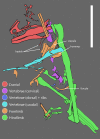
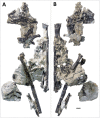

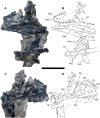
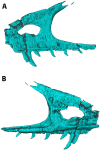


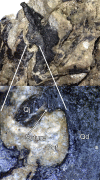
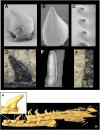
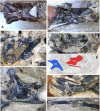
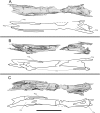
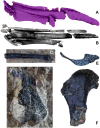
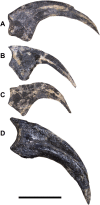
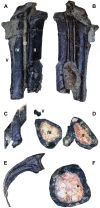


Similar articles
-
A Jurassic avialan dinosaur from China resolves the early phylogenetic history of birds.Nature. 2013 Jun 20;498(7454):359-62. doi: 10.1038/nature12168. Epub 2013 May 29. Nature. 2013. PMID: 23719374
-
New theropod dinosaur from the Upper Cretaceous of Patagonia sheds light on the paravian radiation in Gondwana.Naturwissenschaften. 2020 May 28;107(3):24. doi: 10.1007/s00114-020-01682-1. Naturwissenschaften. 2020. PMID: 32468191
-
The phylogenetic affinities of the bizarre Late Cretaceous Romanian theropod Balaur bondoc (Dinosauria, Maniraptora): dromaeosaurid or flightless bird?PeerJ. 2015 Jun 18;3:e1032. doi: 10.7717/peerj.1032. eCollection 2015. PeerJ. 2015. PMID: 26157616 Free PMC article.
-
A skeleton from the Middle Jurassic of Scotland illuminates an earlier origin of large pterosaurs.Curr Biol. 2022 Mar 28;32(6):1446-1453.e4. doi: 10.1016/j.cub.2022.01.073. Epub 2022 Feb 22. Curr Biol. 2022. PMID: 35196508 Review.
-
A new fossil from the Jurassic of Patagonia reveals the early basicranial evolution and the origins of Crocodyliformes.Biol Rev Camb Philos Soc. 2013 Nov;88(4):862-72. doi: 10.1111/brv.12030. Epub 2013 Feb 28. Biol Rev Camb Philos Soc. 2013. PMID: 23445256 Review.
Cited by
-
Early Cretaceous troodontine troodontid (Dinosauria: Theropoda) from the Ohyamashimo Formation of Japan reveals the early evolution of Troodontinae.Sci Rep. 2024 Jul 25;14(1):16392. doi: 10.1038/s41598-024-66815-2. Sci Rep. 2024. PMID: 39054320 Free PMC article.
-
A qualitative assessment of limits of active flight in low density atmospheres.Sci Rep. 2024 Jun 15;14(1):13823. doi: 10.1038/s41598-024-64114-4. Sci Rep. 2024. PMID: 38879676 Free PMC article.
-
Diuqin lechiguanae gen. et sp. nov., a new unenlagiine (Theropoda: Paraves) from the Bajo de la Carpa Formation (Neuquén Group, Upper Cretaceous) of Neuquén Province, Patagonia, Argentina.BMC Ecol Evol. 2024 Jun 14;24(1):77. doi: 10.1186/s12862-024-02247-w. BMC Ecol Evol. 2024. PMID: 38872101 Free PMC article.
-
Deinonychosaur trackways in southeastern China record a possible giant troodontid.iScience. 2024 Apr 24;27(5):109598. doi: 10.1016/j.isci.2024.109598. eCollection 2024 May 17. iScience. 2024. PMID: 38799075 Free PMC article.
-
Functional constraints on the number and shape of flight feathers.Proc Natl Acad Sci U S A. 2024 Feb 20;121(8):e2306639121. doi: 10.1073/pnas.2306639121. Epub 2024 Feb 12. Proc Natl Acad Sci U S A. 2024. PMID: 38346196 Free PMC article.
References
-
- Agnolin FL, Novas FE. Avian ancestors: a review of the phylogenetic relationships of the theropods Unenlagiidae, Microraptoria, Anchiornis and Scansoriopterygidae. Dordrecht: Springer; 2013. p. 96.
-
- Agnolin FL, Motta MJ, Egli FB, Lo Coco G, Novas FE. Paravian phylogeny and the dinosaur-bird transition: an overview. Frontiers in Earth Science. 2019;6:252. doi: 10.3389/feart.2018.00252. - DOI
-
- Agnolin FL, Powell JE, Novas FE, Kundrat M. New alvarezsaurid (Dinosauria, Theropoda) from uppermost Cretaceous of north-western Patagonia with associated eggs. Cretaceous Research. 2012;35:33–56. doi: 10.1016/j.cretres.2011.11.014. - DOI
-
- Barsbold R. Saurornithoididae, a new family of small theropod dinosaurs from Central Asia and North America. Palaeontologia Polonica. 1974;30:5–22.
-
- Barsbold R, Osmólska H. The skull of Velociraptor (Theropoda) from the Late Cretaceous of Mongolia. Acta Palaeontologica Polonica. 1999;44(2):189–219.
Associated data
Grants and funding
LinkOut - more resources
Full Text Sources


